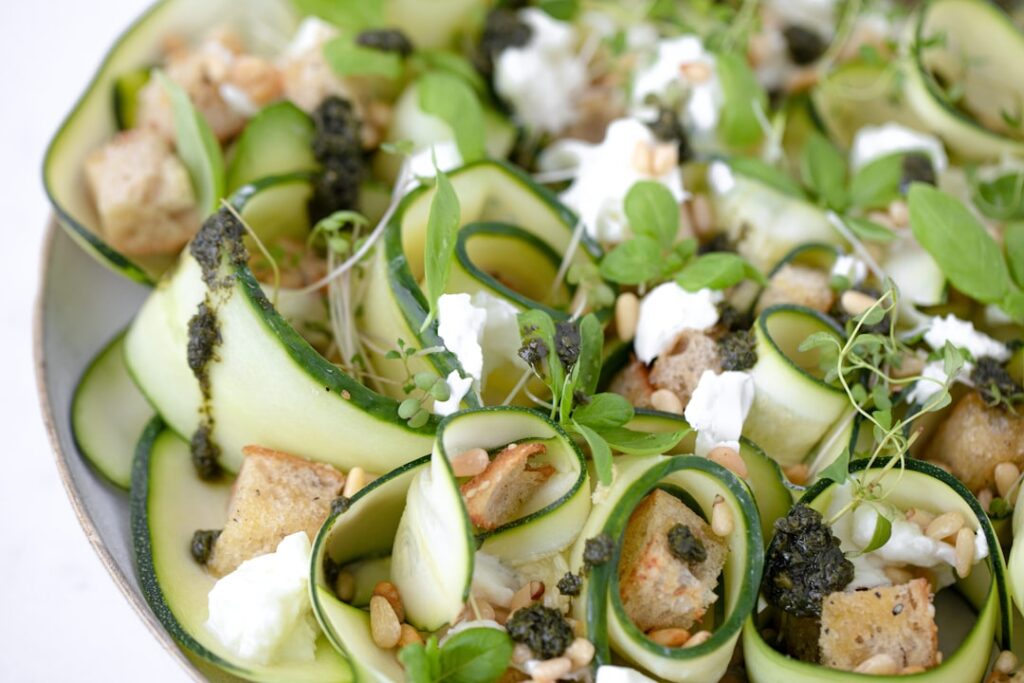Why Zucchini is Every Cook’s Secret Weapon
Zucchini is one of summer’s most versatile vegetables (though botanically it’s a fruit) that can transform from a simple side dish to the star of your meal. Whether you call it courgette, summer squash, or baby marrow, this mild-flavored powerhouse packs serious nutritional benefits while adapting to almost any cuisine.
Quick Zucchini Facts:
- Season: Peak availability May through September
- Nutrition: Only 27 calories per cup, loaded with vitamin C (26% daily value) and potassium
- Uses: Raw in salads, grilled, sautéed, baked into breads, or spiralized as pasta
- Storage: 4-5 days refrigerated fresh, up to 10 months frozen
- Varieties: Green, yellow, round, and long types available
As one food editor finded: “This method is a game changer for anyone with an excess of summer squash” – referring to caramelizing zucchini to concentrate its natural sugars and transform even the pickiest eaters into fans.
For culinary travelers and food enthusiasts, zucchini represents the perfect intersection of local seasonal eating and global cuisine adaptability. From Italian zucchini flowers to Mexican blossom soups, this humble squash connects us to authentic food traditions worldwide.
The beauty of zucchini lies in its chameleon-like ability to absorb flavors while adding moisture to baked goods, bulk to main dishes, and freshness to summer salads – all while keeping calories low and nutrition high.
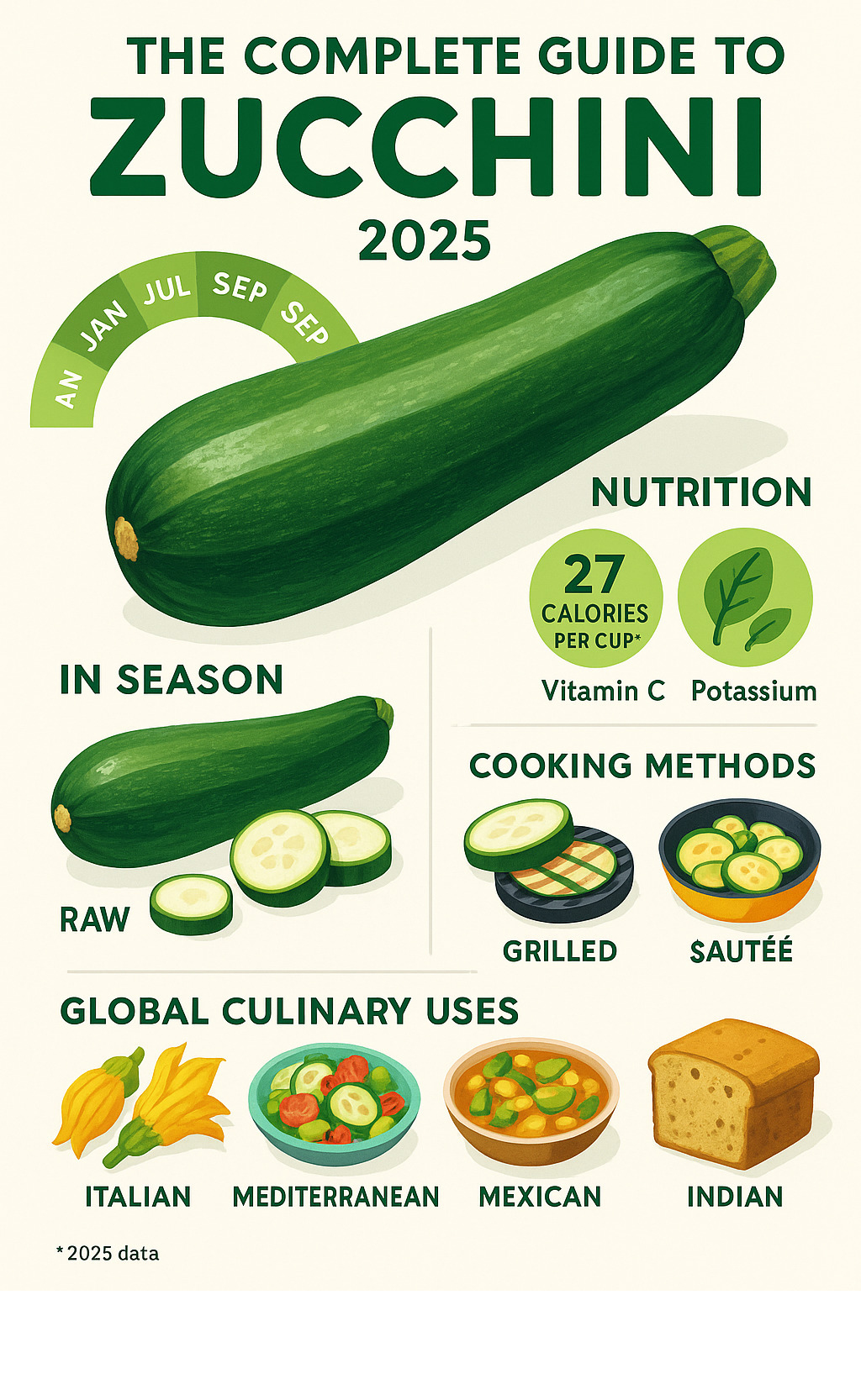
Zucchini 101: History, Varieties, and Nomenclature
Here’s something that might surprise you: while zucchini feels like it’s been around forever, the version we know today is actually a relatively recent creation. The story begins thousands of years ago in Mexico, where indigenous peoples were cultivating summer squashes as early as 7,000 BCE. But the tender, mild zucchini that graces our tables? That’s an Italian masterpiece from the early 1800s.
Italian gardeners took those ancient squash varieties and developed them into something completely new – a summer squash so versatile it would eventually conquer kitchens worldwide.
Zucchini belongs to the Cucurbitaceae family, making it a cousin to melons, cucumbers, and pumpkins. Despite how we use it in cooking, zucchini is technically a fruit – specifically, the swollen ovary of the squash flower, which explains why those bright yellow zucchini blossoms are edible and delicious when stuffed or fried.
The zucchini plant is quite the overachiever. Left to its own devices, a single zucchini can grow over three feet long – though you don’t want to let it get that big unless you’re entering it in a county fair. We harvest zucchini when it’s under eight inches for the best flavor and texture.
One thing that makes zucchini both wonderful and challenging is its incredibly high water content – nearly 90%. This gives it that refreshing quality we love, but it also means you need to know a few tricks to avoid soggy dishes.
The Many Names of Zucchini
The word zucchini comes straight from Italian – “zucchino” means “small squash.” But depending on where your culinary trips take you, you’ll encounter this versatile vegetable under different names.
If you’re exploring European markets or following British recipes, you’ll see courgette – the French term that’s become standard throughout much of Europe. In American cooking, zucchini often falls under the broader category of summer squash.
Key Varieties Every Cook Should Know
Not all zucchini varieties perform the same way in the kitchen, and knowing the differences can lift your cooking significantly.
Black Beauty is the workhorse variety you’ll find in most grocery stores. With its dark green skin and creamy white flesh, it’s reliable, versatile, and perfect for everything from quick sautés to zucchini bread.
Gold Rush brings a sunny yellow color along with a slightly sweeter flavor profile. Yellow zucchini varieties often contain higher levels of certain antioxidants compared to their green cousins.
Round varieties like Eight Ball are game-changers for stuffing. Their compact, spherical shape creates perfect vessels for rice, meat, or vegetable fillings.
For the truly adventurous cook, Costata Romanesco represents Italian heirloom excellence with distinctive ridged skin and superior flavor. Scientific research on zucchini origins shows how these heritage varieties maintain genetic diversity important for both flavor and plant resilience.
Nutrition & Evidence-Based Health Benefits of Zucchini
Here’s something that might surprise you: zucchini is basically nature’s multivitamin disguised as a humble summer squash. At just 27 calories per cup, this green powerhouse delivers an impressive nutritional punch that puts many so-called “superfoods” to shame.
When you bite into fresh zucchini, you’re getting 26% of your daily vitamin C needs – more than many citrus fruits! Add 11% of your vitamin A requirements, 14% of your manganese, plus significant amounts of potassium and folate, and you’ve got a nutritional goldmine.
Zucchini contains two special antioxidants called lutein and zeaxanthin that act like natural sunglasses for your eyes. These compounds concentrate in your retina and may help prevent age-related macular degeneration.
The fiber content deserves special mention too. Those 2 grams per cup work overtime to keep your digestive system happy and your blood sugar stable. It’s gentle, soluble fiber that feeds good bacteria in your gut without causing digestive drama.
Recent research has shown that zucchini peel extract may help reduce blood sugar and insulin levels, making it particularly valuable for anyone managing diabetes or avoiding afternoon energy crashes.
How Zucchini Supports Heart and Blood Sugar
Your heart loves zucchini for its generous potassium content, which works like a natural blood pressure regulator. Potassium acts as sodium’s kryptonite, helping counteract the blood pressure-raising effects of too much salt.
The soluble fiber in zucchini binds to cholesterol in your digestive system like a tiny sponge, helping escort it out of your body before it can cause trouble.
For blood sugar management, zucchini is practically a miracle worker. With only 3 grams of carbs per cooked cup, it makes an excellent pasta substitute that won’t send glucose levels on a roller coaster ride. Those spiralized zucchini noodles aren’t just trendy – they’re genuinely helpful for maintaining steady energy levels.
Why the Peel Packs a Punch
Here’s a kitchen tip that could change your cooking game: never peel your zucchini unless you absolutely have to. That tender skin contains the highest concentration of those eye-protecting antioxidants we mentioned earlier.
Young zucchini has skin so tender you’ll barely notice it’s there, but the nutritional benefits are definitely noticeable. Yellow zucchini varieties may actually contain slightly higher antioxidant levels than their green cousins.
The key to maximizing zucchini’s health benefits is eating the whole vegetable, skin and all. It’s nature’s way of packaging all the good stuff in one convenient, delicious bundle.
Buying, Storing & Preserving Zucchini
There’s nothing quite like selecting perfect zucchini at your local farmers market. Look for specimens that feel surprisingly heavy for their size – this indicates high water content and freshness. The skin should be glossy and taut, almost like it’s been polished.
Perfect zucchini feels firm without any give when you press gently. Avoid any with soft spots, wrinkled skin, or that massive baseball bat-sized specimen that might look impressive but will taste bland and seedy.
Peak season runs from May through September, with July being when gardeners start leaving bags of zucchini on neighbors’ doorsteps. Size matters – zucchini between 6-8 inches long offers the best flavor and texture.
Fresh zucchini keeps best in your refrigerator’s crisper drawer for about 4-5 days. The high water content means it deteriorates quickly at room temperature.
Storage Method Comparison:
| Method | Shelf Life | Best Uses |
|---|---|---|
| Fresh refrigerated | 4-5 days | All cooking methods |
| Blanched and frozen | 10 months | Soups, baked goods |
| Pickled | 1-2 years | Condiment, salads |
| Dehydrated | Up to 1 year | Snacks, soups |
The blanching process for freezing is straightforward. Cut your zucchini into rounds or chunks, blanch in boiling water for 2-3 minutes, then plunge into ice water. This stops the cooking process and preserves both texture and nutrients.
Kitchen Conversions When Preserving Zucchini
When dealing with a zucchini windfall, proper measurements become your best friend. One medium zucchini typically weighs about 8 ounces and yields roughly 1½ cups when grated.
For serious preservation projects, one bushel (about 40 pounds) of fresh zucchini will give you 32-40 pints when properly blanched and frozen.
Baking with zucchini requires precision too. Two cups of shredded zucchini can replace up to half the oil in many baked goods. When your recipes call for precise conversions, knowing how many tablespoons in a cup becomes essential for successful batch cooking.
Sustainable Choices for Zero-Waste Cooking
Zucchini practically begs for zero-waste treatment. Those beautiful yellow blossoms aren’t just decoration – they’re edible gold. Male flowers can be stuffed with ricotta, dipped in light batter, and fried for an Italian-inspired treat.
Even that monster zucchini that grew too large has value. Grate it, salt it heavily, and let it drain for 30 minutes to remove excess moisture. Then squeeze it dry and use it in breads, muffins, or soups.
The peels and ends make excellent compost material, breaking down quickly and adding valuable nutrients back to garden soil, completing the sustainable cycle from earth to table and back again.
Cooking Techniques & Must-Try Zucchini Recipes
The magic of cooking zucchini lies in understanding its personality – this vegetable is basically water with an attitude! Once you master its quirks, you’ll find why chefs around the world have fallen in love with its versatility.
The biggest mistake home cooks make? Fighting against zucchini’s high water content instead of working with it. High heat becomes your best friend here, quickly evaporating excess moisture while creating those beautiful caramelized edges that make all the difference.
Sautéing transforms ordinary zucchini into something special in just 5 minutes over medium-high heat. Grilling adds smoky depth in 3-4 minutes per side, while air frying delivers crispy perfection in 12 minutes at 400°F. For deeper flavors, try roasting at 425°F for 20 minutes with good olive oil and your favorite seasonings.
But here’s where things get really interesting – caramelizing zucchini slowly over 30-45 minutes transforms it into something completely different. The natural sugars concentrate and develop, creating an almost jam-like consistency that’s absolutely divine. As food writers have finded, this method can convert even the most stubborn zucchini skeptics.
The Best Way to Cook Zucchini for Maximum Flavor
After testing countless methods, the classic sauté wins for both flavor and foolproof results. Heat your largest nonstick skillet over medium-high heat, add sliced zucchini in a single layer, and here’s the crucial part – resist the urge to stir constantly. Let those pieces develop golden-brown edges before moving them around.
Want to take things up a notch? Try the restaurant trick of salting your zucchini first. Sprinkle sliced pieces with kosher salt, let them rest for 15-20 minutes to draw out moisture, then pat completely dry before cooking. This simple step prevents soggy disasters and intensifies the natural flavors dramatically.
The slow-cooked caramelized method deserves special mention here. Grate your zucchini and cook it gently over low-medium heat for 30-45 minutes, stirring occasionally. What emerges is sweet, jammy, and utterly transformed – as one food editor perfectly put it, this technique is “guaranteed to convert even the most adamant zucchini haters.” It’s like magic in a pan, inspired by techniques from kitchens that truly understand how to coax maximum flavor from simple ingredients, much like the approach found in Smitten Kitchen’s caramelized zucchini butter spaghetti.
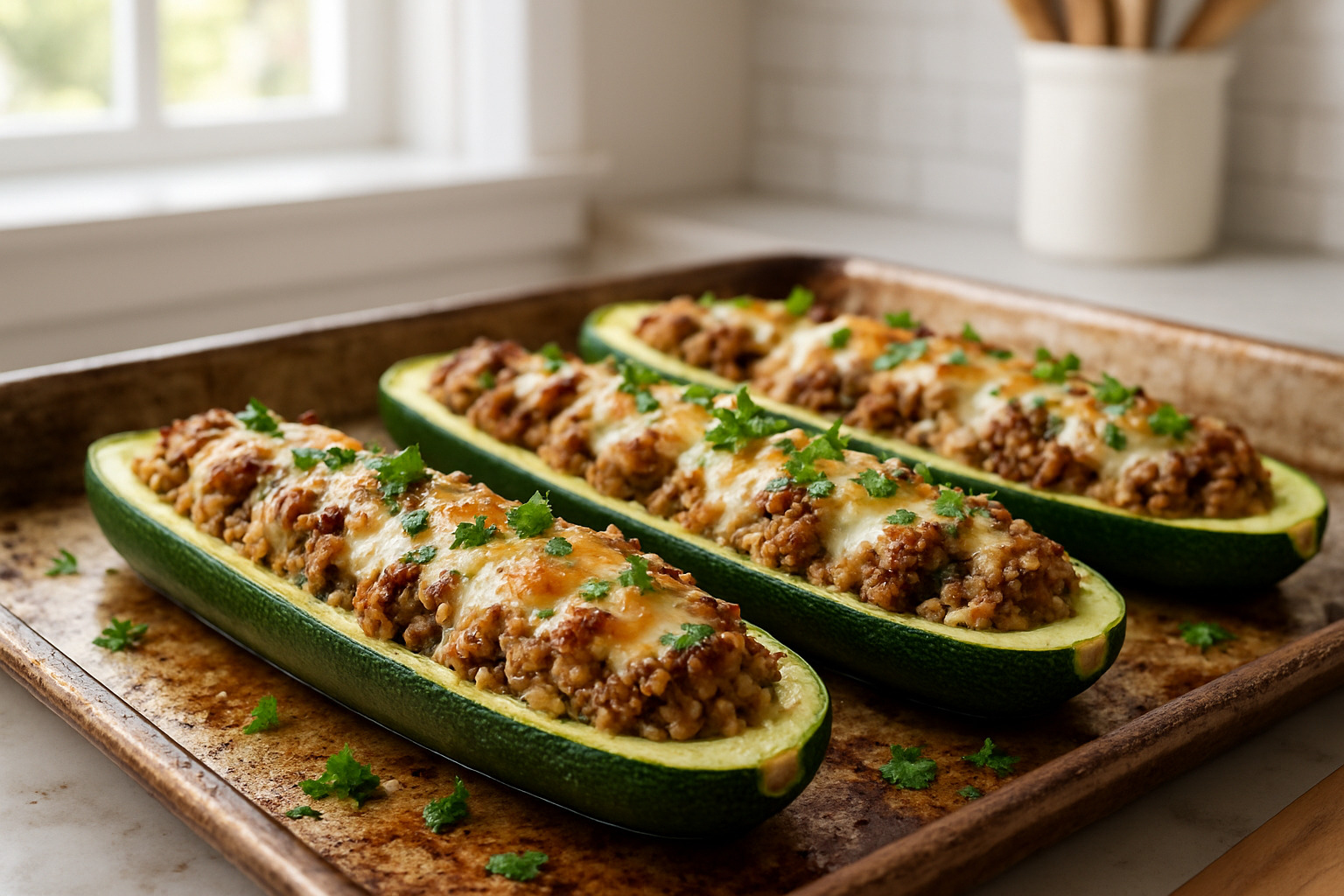
Zucchini-Packed Main Dishes
Zucchini shines brightest when it’s the star of substantial, satisfying main courses. Those gorgeous stuffed zucchini boats you see at farmers markets? They’re perfect vessels for hearty fillings that combine beautifully with ground beef recipes, mixing the meat with rice, fresh herbs, and melted cheese before a final bake in the oven.
For lighter summer evenings, zucchini becomes the perfect companion to grilled proteins. Its mild, almost neutral flavor acts like a culinary chameleon, absorbing bold seasonings without competing for attention. This makes it ideal for global flavor trips – from Mediterranean herb blends to spicy Mexican seasonings.
The spiralized zucchini revolution has given us “zoodles” – a brilliant pasta substitute that dramatically cuts calories while maintaining satisfaction. These vegetable noodles work beautifully with rich tomato sauces, creamy preparations, or even simple garlic and olive oil treatments. Just like pairing seasonal vegetables such as broccolini with pasta dishes, zucchini noodles create that perfect balance of nutrition and comfort food satisfaction.
Mediterranean-inspired dishes showcase zucchini’s true potential. Think rustic ratatouille, where slow-cooked zucchini mingles with tomatoes, eggplant, and aromatic herbs. This creates a dish that works equally well as a hearty side or a complete vegetarian main course, especially when served over grains or with crusty bread.
Sweet Treats: From Mom’s Zucchini Bread to Brownies
Here’s where zucchini pulls off its greatest trick – disappearing completely into beloved baked goods while adding incredible moisture and nutrition. The classic zucchini bread remains a summer staple because it produces results that are impossibly moist and tender. As one enthusiastic baker shared, “my kids eat it as quickly as I can make it!”
The secret to successful zucchini baking lies in moisture management. Grate your zucchini finely – almost to a pulp – and for recipes where excess water could spell disaster, consider the salt-and-drain method we mentioned earlier.
Zucchini brownies represent the ultimate stealth vegetable dessert. You can sneak two whole cups of shredded zucchini into a batch without anyone detecting its presence. The vegetable adds moisture while reducing the need for additional butter or oil, creating fudgy results that satisfy chocolate cravings guilt-free.
Smart bakers take advantage of zucchini season by making multiple loaves of bread and freezing them. These freeze beautifully for up to three months, giving you grab-and-go breakfasts throughout the year. Just wrap cooled loaves tightly in plastic wrap, then aluminum foil, and you’ll have taste-of-summer treats waiting in your freezer.
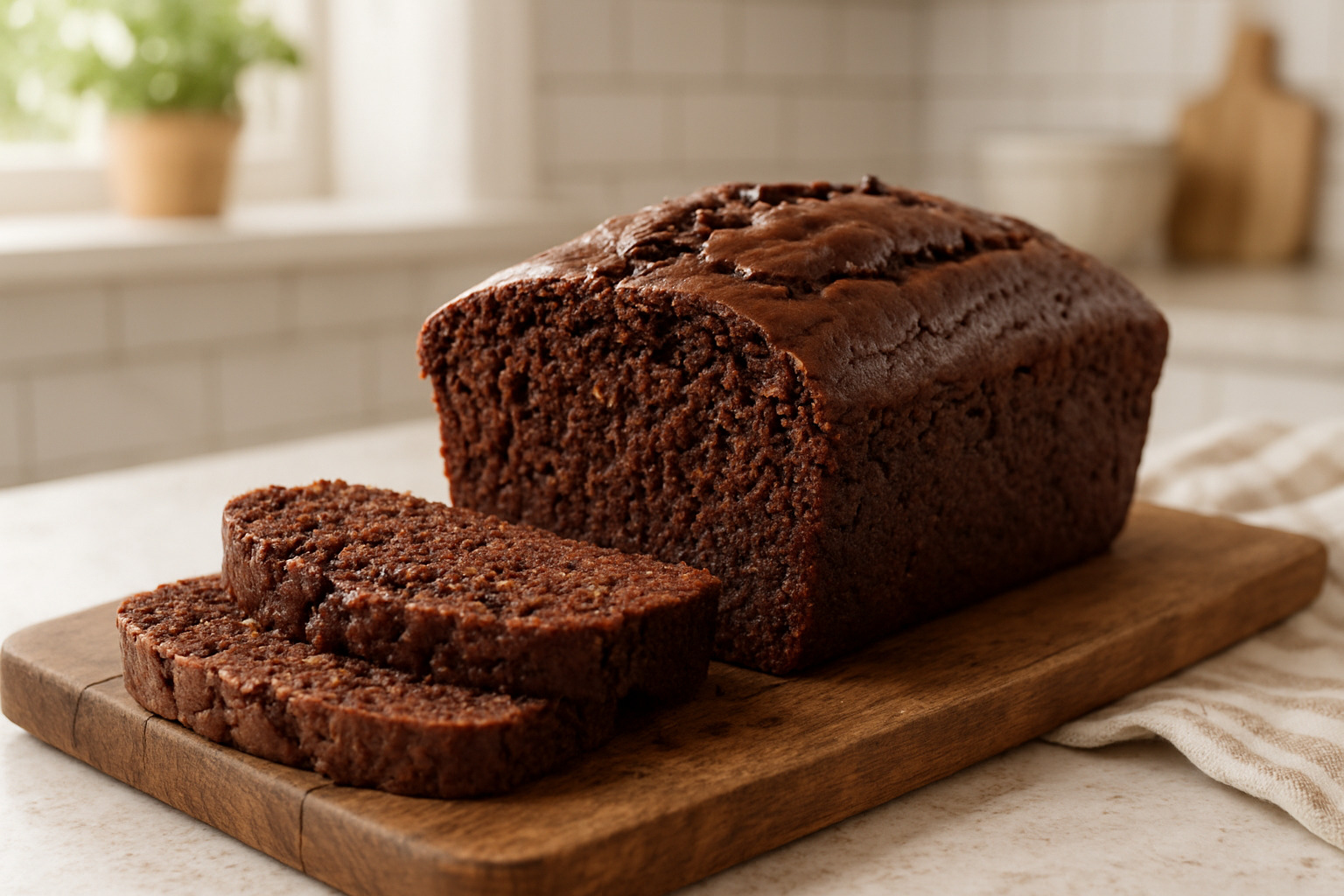
Zucchini in Sustainable Dining & Global Culinary Trends
The story of zucchini in today’s food world is really about how we’re learning to eat better – for ourselves and our planet. This humble summer squash has quietly become a hero in the sustainable dining movement.
Zucchini grows easily in most climates, requires minimal processing, and travels well from local farms to your table. It’s the kind of ingredient that makes chefs smile because it checks all the boxes – sustainable, versatile, and delicious when treated right.
The farm-to-table movement has given zucchini a well-deserved spotlight. What was once considered a basic garden vegetable is now starring on restaurant menus from coast to coast. Chefs love how it captures the essence of summer while adapting to virtually any cooking style or flavor profile.
Zucchini’s global passport is what makes it special. In Mediterranean kitchens, it’s been a staple for generations – appearing in everything from Greek moussaka to Italian frittatas. Mexican cuisine celebrates those beautiful zucchini blossoms in delicate soups and crispy quesadillas. Each culture has found its own way to honor this versatile vegetable.
The plant-based dining trend has only amplified zucchini’s popularity. When you need to create satisfying meals without relying on meat or heavy ingredients, zucchini steps up beautifully. It adds bulk, moisture, and nutrition while keeping calories in check.
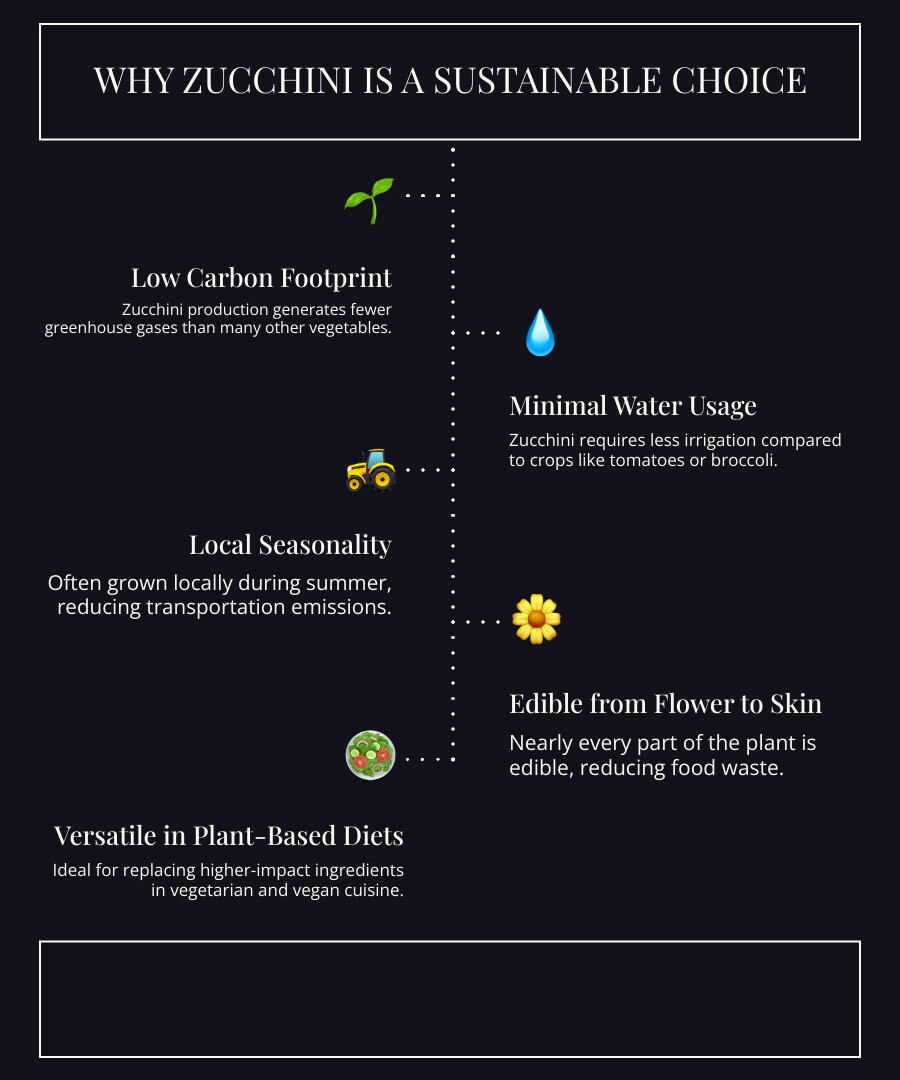
How Restaurants Spotlight Zucchini Season
Summer in New York City’s restaurant scene brings something magical – the annual celebration of zucchini season. Forward-thinking restaurants know that when local zucchini hits peak season, it’s time to get creative.
You’ll find innovative chefs turning zucchini into everything from grilled salads to show-stopping stuffed blossoms. The spiralized “zoodle” trend has given pasta lovers a lighter option that doesn’t sacrifice satisfaction.
Food festivals have caught on too. Zucchini cooking demonstrations are drawing crowds eager to learn the secrets of proper grilling and that game-changing caramelizing technique that transforms even the most skeptical diners into believers.
Cooking at Home the Sustainable Way
Bringing sustainable zucchini cooking into your home kitchen is easier than you might think. The key is working with the seasons and planning ahead during peak abundance.
Air fryers have revolutionized home zucchini cooking. They deliver crispy, perfectly cooked results while using significantly less energy than conventional ovens. Twelve minutes at 400°F transforms ordinary zucchini slices into something extraordinary.
The real sustainability win comes from batch cooking during peak season. When your garden is overflowing with zucchini, that’s the time to blanch and freeze portions for winter meals. You’ll save money, reduce food waste, and enjoy summer’s bounty year-round.
For more insights into how sustainable dining is shaping our food future, explore sustainable dining trends that are changing kitchens everywhere.
Frequently Asked Questions about Zucchini
Why is my sautéed zucchini soggy?
The dreaded soggy zucchini problem strikes even experienced cooks, but it’s completely preventable. Zucchini is nearly 90% water, which means improper cooking technique turns this delicious vegetable into a mushy disappointment.
The most common mistake is using too low heat or overcrowding your pan. When zucchini releases its moisture into a crowded, cool pan, it essentially steams itself instead of browning properly. Instead, crank up the heat to medium-high and give each piece plenty of space.
Here’s the game-changing technique: salt your sliced zucchini and let it sit for 15-20 minutes before cooking. This draws out excess moisture, which you can then pat away with paper towels. The result? Zucchini that actually browns beautifully and maintains its texture.
Can zucchini replace pasta for low-carb diets?
Zucchini noodles have become the darling of the low-carb world, and for good reason. With only 3 grams of carbs per cooked cup compared to traditional pasta’s much higher carb content, “zoodles” deliver satisfaction without the blood sugar spike.
The key to successful zucchini pasta lies in proper preparation. Spiralized zucchini works best when lightly sautéed for just 2-3 minutes – any longer and you’ll end up with mushy noodles.
For the most pasta-like experience, use the salting technique here too. Salt your spiralized zucchini, let it drain for 15 minutes, then squeeze out excess moisture. This prevents your sauce from becoming watery.
Is it safe to eat zucchini raw with the skin on?
Absolutely! Raw zucchini with its skin intact isn’t just safe – it’s actually the most nutritious way to enjoy this versatile vegetable. The skin contains the highest concentration of valuable antioxidants like lutein and zeaxanthin that support eye health.
Young zucchini has incredibly tender skin that’s completely digestible and adds a pleasant mild crunch to salads and slaws. Simply give your zucchini a good wash under running water before slicing.
Conclusion
There’s something magical about zucchini that transforms ordinary meals into extraordinary experiences. This humble summer squash has earned its place as a true culinary chameleon, adapting to everything from hearty Italian pasta dishes to delicate French preparations, all while delivering impressive nutrition in every bite.
What makes zucchini truly special isn’t just its versatility – it’s how this simple vegetable connects us to sustainable eating practices and global food traditions. When you’re spiralizing fresh zucchini into noodles or stuffing those gorgeous yellow blossoms with creamy cheese, you’re participating in centuries-old culinary wisdom that celebrates seasonal abundance.
The health benefits alone make zucchini worth celebrating. With just 27 calories per cup yet packed with vitamin C, potassium, and those eye-protecting antioxidants, it’s nature’s way of proving that nutritious food doesn’t have to be boring or complicated.
But perhaps the most exciting aspect of cooking with zucchini is how it encourages experimentation. Start simple – try that basic sauté technique we discussed to avoid the dreaded soggy texture. Once you’ve mastered that, venture into caramelizing for those concentrated sweet flavors that convert even the pickiest eaters.
The sustainable story of zucchini resonates perfectly with today’s conscious dining movement. Supporting local farmers during peak season, reducing food waste by using every part of the plant, and choosing energy-efficient cooking methods all contribute to a more thoughtful approach to eating.
From busy farmers markets to innovative restaurant menus, zucchini continues to inspire chefs and home cooks alike. Its peak season abundance creates opportunities for batch cooking, preservation, and sharing with neighbors – fostering the kind of food community that makes eating truly meaningful.
We encourage you to accept zucchini in all its forms this season. Whether you’re grating it into that incredibly moist chocolate bread, grilling it for a simple summer side, or getting creative with stuffed boats, great cooking starts with understanding your ingredients.
For more inspiration on how seasonal eating fits into broader sustainable dining practices, explore our comprehensive guide on sustainable dining trends to find how mindful food choices improve both flavor and environmental responsibility.
The beauty of zucchini lies in its invitation to slow down, appreciate seasonality, and find joy in simple, well-prepared food. Your culinary trip with this remarkable vegetable is just beginning – and we can’t wait to see where it takes you.

